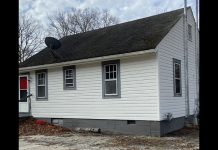
HOWELL – If you have experienced a hike in your monthly electricity payment, you aren’t the only one. Some Howell residents are seeing drastic changes in their electric bills since the start of the New Year, claiming price hikes of hundreds of dollars.
According to Howell Township’s Director of Community Development, James Herrman, this is because of their previous budget payment plan, prior to the end of the township’s energy aggregation program.
“The spikes in their electric bills are not related to a fluctuation in prices,” said Herrman. “Residents that are on a budget payment plan are the only ones that should see any change in their electric bill as they have true-ups with Tri-Eagle at the end of the program.”
Prior to January 2018, Howell Township contracted with Tri-Eagle Energy for the HEA Program.
“Howell Township launched the Howell Energy Aggregation (HEA) program several years ago, for the purpose of creating purchasing leverage and providing an opportunity for residents of the Township to save money on their electric bills,” stated a township press release from December 2017. “Given that the current contract ends in December 2017, participating residents are being transitioned back to JCP&L effective with their December meter read.”
The release stated that HEA customers would have received letters notifying them of the change back to the JCP&L price, and that all residents that don’t have a third-party supplier would still be paying the same JCP&L price.
Due to the end of the energy aggregation program at the close of January, some residents are seeing higher electric bills now because they are being charged for the full price for energy usage in previous months.
Residents on the budget plan pay a fixed rate per month rather than paying per the amount of energy used. Herrman gave the example that if a resident’s budget plan costs them $130 per month prior to the end of the energy aggregation program, but they used $200 worth of energy in those same months, that resident is now paying the overflow of what their budget plan saved them.
For some residents, the monthly payments on their budget plan caused a shortfall still owed to the power supplier for the amount of energy actually used during previous months, before the end of the program.
“Due to the timing of the plan cycle for some residents on a budget plan, the amount of energy used in those fall/winter months far exceed the budget plan monthly payment. Since the energy supplier is no longer supplying energy, there is no longer a monthly payment being made to that supplier for the rest of the year,” explained Herrman. “This is how certain residents will see a true-up.”

The added costs that are causing some monthly bills to skyrocket constitute these true-ups. Residents are paying off the rest of what they owe for the amount of power they used, while still on a budget plan. It’s essentially a final bill for the shortfall, said Herrman.
“I would urge the resident to contact Tri-Eagle Energy to make sure this is the case and that there are no anomalies in their bill,” he added.
Herrman also noted that residents can choose their own provider at any time. “However they cannot choose their energy delivery company as they must get the energy over JCP&L’s power lines in this area,” he added.
“Residents should carefully review any contracts they enter into with third party suppliers. Those contracts typically do not have any language to prevent the supplier from jacking up the rates a few months into the program. That’s the difference with the township program,” he explained.
The township’s contract with the third party energy supplier contains a clause that forces the supplier to maintain rates at or under JCP&L’s tariff price. If they do not, everyone will automatically be switched back to JCP&L.
“There was never a chance to pay more than JCP&L’s price,” Herrman said.







